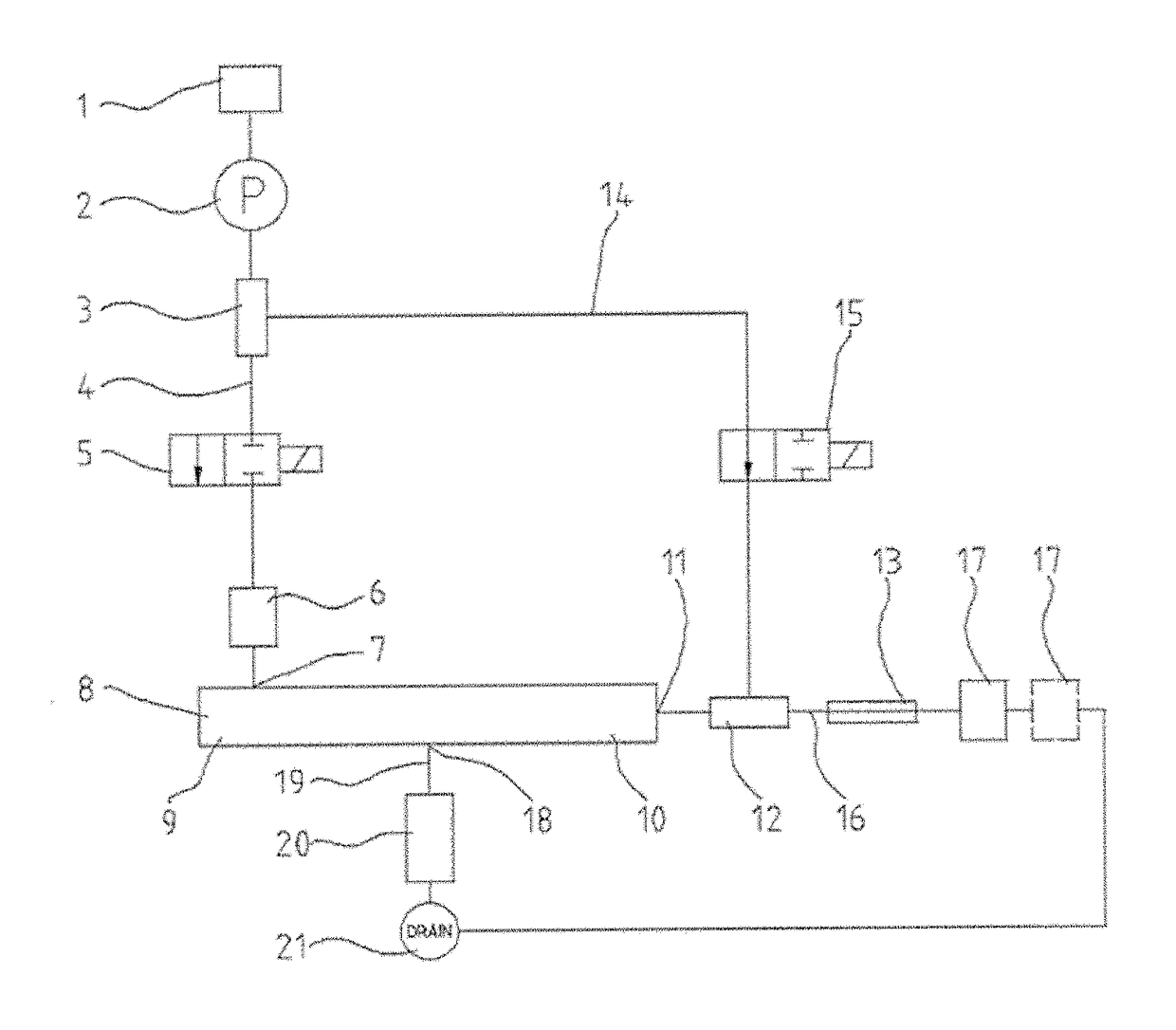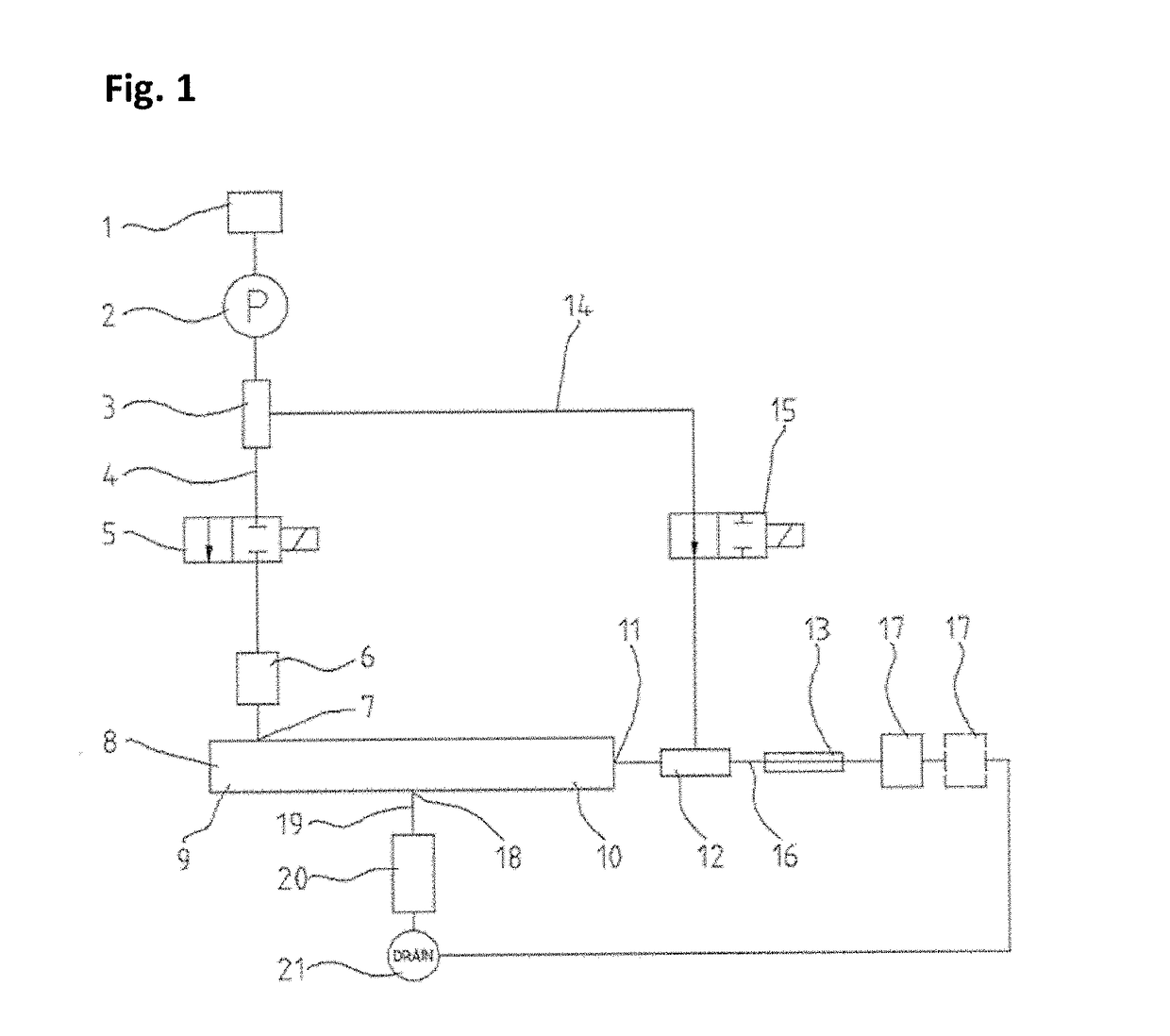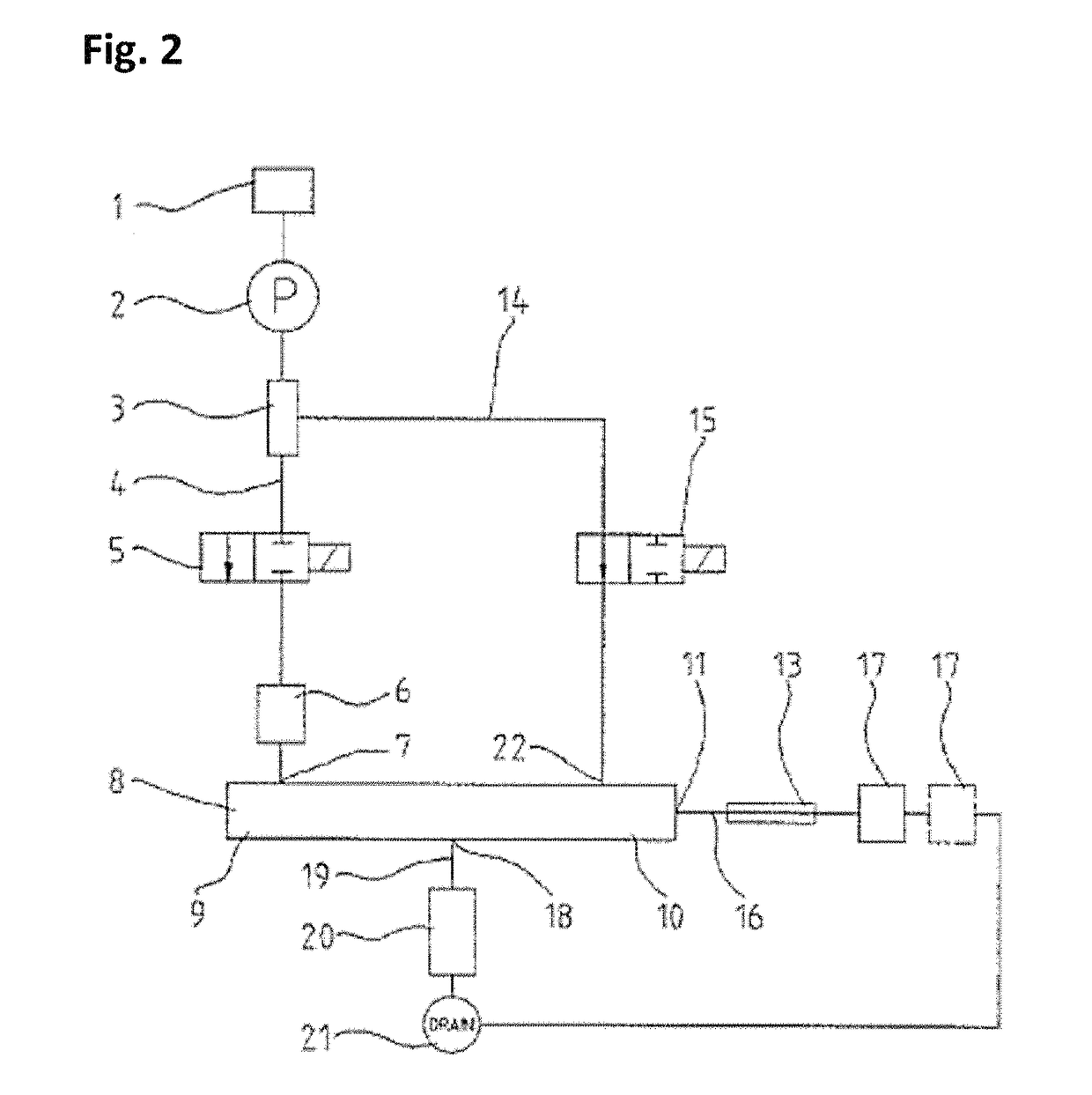Apparatus for field-flow fractionation
a technology of apparatus and flow rate, applied in the field of apparatus for fieldflow fractionation, can solve the problems of limited dynamic region of flow rate, limited range of working pressure in which mass flow regulators may be used, delay in response time for flow rate control, etc., and achieve the effects of reducing cost and risk of failure, reducing cost and risk
- Summary
- Abstract
- Description
- Claims
- Application Information
AI Technical Summary
Benefits of technology
Problems solved by technology
Method used
Image
Examples
Embodiment Construction
[0126]In the following, preferred embodiments of the apparatuses of the invention will be explained with reference to the attached drawings and the reference numerals used there.
[0127]FIG. 1 shows the schematic design of an apparatus for field-flow fractionation according to the invention. Having passed a reservoir (1) and a pump (2), the volume flow is split via a T-connector (3) into a first flow path (4) and a second flow path (14). The first flow path (4) is initially guided to a first valve (5) and then, via an injector (6), to a first connector (inlet) (7) at a first end (9) of the separation channel (8). The separation channel can either be a hollow-fiber separation channel or an AF4 separation channel.
[0128]The second flow path (14) is guided to a second T-connector (12) via a second valve (15). This T-connector splits the volume flow between a second connector (outlet) (11) at a second end (10) of the separation channel (8) and a third flow path (16) which is guided to the ...
PUM
| Property | Measurement | Unit |
|---|---|---|
| flow rate | aaaaa | aaaaa |
| pressure | aaaaa | aaaaa |
| size | aaaaa | aaaaa |
Abstract
Description
Claims
Application Information
 Login to View More
Login to View More - R&D
- Intellectual Property
- Life Sciences
- Materials
- Tech Scout
- Unparalleled Data Quality
- Higher Quality Content
- 60% Fewer Hallucinations
Browse by: Latest US Patents, China's latest patents, Technical Efficacy Thesaurus, Application Domain, Technology Topic, Popular Technical Reports.
© 2025 PatSnap. All rights reserved.Legal|Privacy policy|Modern Slavery Act Transparency Statement|Sitemap|About US| Contact US: help@patsnap.com



